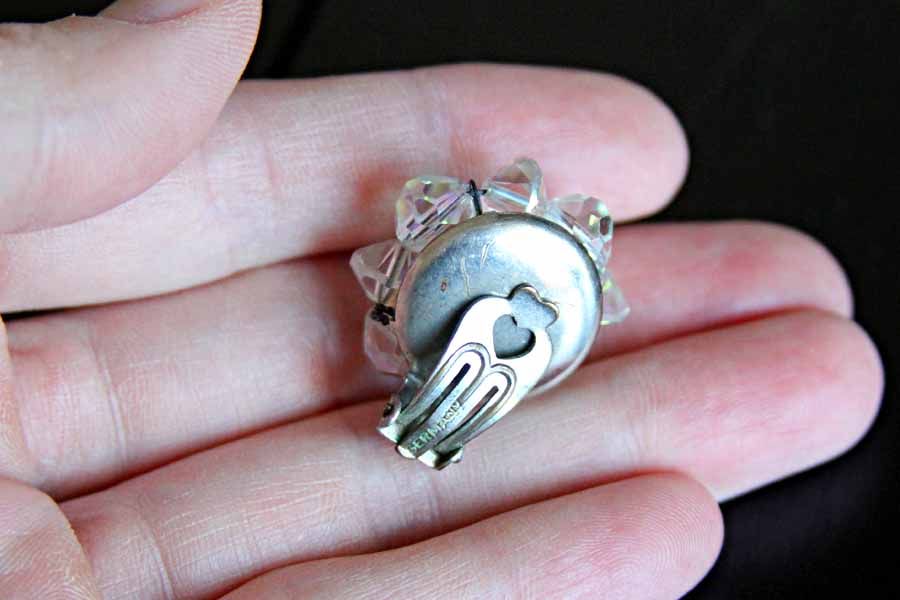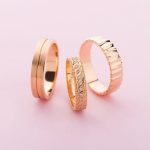Handmade jewelry has become increasingly popular in recent years, not only for its unique beauty but also for the personal touch it adds to any outfit. From dainty necklaces to statement earrings, handmade pieces allow individuals to express their creativity and individuality through wearable art.
One popular technique that has gained a significant following is creating jewelry with wire and beads. This versatile craft allows for countless design possibilities, making it accessible for beginners while still challenging enough for seasoned artisans.
The combination of wire and beads offers a myriad of opportunities to experiment with various textures, colors, shapes, and patterns. Whether someone is looking to make an elegant pendant or a bohemian-inspired bracelet, using wire and beads opens up a world of creative options. Additionally, this style of jewelry-making allows artisans the ability to personalize their creations by incorporating birthstones, initials, or other meaningful charms that hold sentimental value.
Creating jewelry with wire and beads also offers an opportunity for individuals to tap into their inner artist while simultaneously developing new skills. The satisfaction that comes from starting with a simple spool of wire and a handful of beads and transforming them into a beautiful piece of jewelry cannot be understated. Not only is it rewarding on a personal level, but many individuals have also taken this hobby and turned it into successful small businesses selling their handmade creations.
In this article, we will explore the various techniques used in making jewelry with wire and beads – from wire wrapping to bead selection – catering to beginners as well as those looking for more advanced projects. We will dive into step-by-step tutorials on different wire techniques while providing tips on selecting the right beads for specific designs.
This comprehensive guide aims to equip you with the knowledge needed to embark on your own journey in creating one-of-a-kind pieces that showcase your artistic vision and style. So, gather your materials, unleash your creativity, and let’s get started on making stunning jewelry with wire and beads.
Materials Needed
Gauges of Wire
When it comes to making jewelry with wire and beads, choosing the right gauge wire is crucial. The gauge refers to the thickness of the wire, and different gauges are suitable for different types of jewelry projects.
For beginners, it is recommended to start with 20-24 gauge wires, as they are easier to manipulate and work with. Thicker wires like 18 gauge are perfect for making sturdy structures or decorative elements, while finer gauges like 28-32 are great for delicate and intricate designs.
Types of Beads
One of the most exciting aspects of creating wire and bead jewelry is selecting the perfect beads for your designs. There is an endless variety of beads available in different shapes, sizes, colors, and materials. From glass beads to gemstones, crystal beads to wooden beads, each type adds a unique touch to your creations. Consider your design aesthetic and color scheme when choosing beads. Mixing different types of beads can create beautiful contrasts and textures in your jewelry pieces.
Essential Tools
To bring your wire and bead jewelry designs to life, you’ll need a set of essential tools specifically designed for jewelry making. Here are some tools that should be included in every jeweler’s toolbox:
- Jewelry Pliers: These come in various types such as round-nose pliers for creating loops and curves; chain-nose pliers for gripping and bending wire; flat-nose pliers for holding components; and crimping pliers for securing crimp beads or tubes.
- Wire Cutters: A good pair of wire cutters is essential for cleanly cutting through different gauges of wire without deforming them.
- Beading Mat: This soft, non-slip surface provides a convenient workspace where you can organize your beads during the jewelry-making process without worrying about them rolling away.
- Beading Needles: These thin, pointed needles are used for stringing beads onto thread or wire when creating intricate designs or working with small beads.
- Wire Jig: A wire jig is a helpful tool for creating consistent shapes and patterns in your wire designs. It allows you to bend wire around pegs to form loops, curves, and angles with precision.
It’s important to invest in high-quality tools as they can greatly impact the quality of your jewelry-making experience and the final outcome of your pieces. With these materials at hand, you’ll be well-equipped to dive into the creative world of making jewelry with wire and beads.
Wire Techniques
Wire techniques are fundamental to creating intricate and stunning jewelry designs with wire and beads. These techniques allow jewelry makers to manipulate the wire into various shapes and forms, providing endless opportunities for creativity. In this section, we will explore three popular wire techniques: wire wrapping, wire coiling, and wire weaving.
Firstly, let’s delve into the art of wire wrapping. This technique involves encasing beads or stones with loops or spirals of wire to secure them in place while adding an elegant touch to the design.
Wire wrapping can be used to create beautiful pendants, earrings, and even bracelets. Step-by-step tutorials will guide you through the process of creating different styles of wraps, such as basic single wraps for beginners or more intricate designs for those looking for a challenge.
Next up is wire coiling, which adds texture and dimension to your jewelry pieces. Coiling involves wrapping the wire tightly around itself in a controlled manner to form unique patterns or structures. By varying the tightness of your coils or combining multiple wires together, you can achieve stunning effects that enhance the overall aesthetic of your creations. We will provide detailed instructions on how to start coiling with different gauges of wires and techniques to maintain even coil spacing.
Lastly, we have wire weaving as another technique that allows you to incorporate intricate patterns into your jewelry designs. Wire weaving involves intertwining multiple strands of wires together in various patterns or braids. This technique creates visually appealing textures and designs that can be used as focal points in necklaces or bracelets. Our step-by-step tutorials will guide you through different weaving styles, such as over-under weave and basket weave patterns.
By mastering these wire techniques – wrapping, coiling, and weaving – you can unlock the full potential of wire and bead jewelry making. Experimenting with different combinations of techniques will enable you to create unique pieces that reflect your personal style and vision. So grab your pliers and wire, and let’s dive into the creative world of wire techniques in jewelry making.
Bead Selection
When it comes to creating jewelry with wire and beads, the selection of beads plays a crucial role in determining the overall look and feel of your design. With countless options available in terms of size, color, shape, and material, it can feel overwhelming to choose the perfect beads for your project. However, by following a few tips and recommendations, you can make informed decisions that will enhance your wire jewelry creations.
One important consideration when selecting beads is their size. Beads come in various sizes ranging from tiny seed beads to larger focal beads. The size of the bead you choose will depend on the style of jewelry you want to create.
For delicate and dainty pieces like earrings or delicate necklaces, smaller-sized beads are ideal. On the other hand, if you want to make a statement with bold or chunky designs like bracelets or pendants, using larger-sized beads will create an eye-catching look.
Another factor to consider is the color of the beads. Color choice can greatly impact the mood and aesthetic of your jewelry piece. Consider whether you want to create a vibrant and energetic design using bold colors or a more subtle and elegant look with neutral tones. Additionally, think about how different colors can complement each other or create contrast. Mixing and matching complementary colors or using a monochromatic palette can add visual interest to your beadwork.
In addition to size and color, bead shape also contributes to the overall design. Beads come in various shapes such as round, oval, square, cylindrical, and many more. Experimenting with different bead shapes can open up creative possibilities within your designs. For example, combining round beads with elongated cylindrical beads can create an interesting texture or pattern in a bracelet or necklace.
Lastly, consider the material choices for your beads. Beads can be made from a wide range of materials such as glass, crystal, gemstone, metal, wood, and more. Each material has its own unique characteristics and appearance, allowing you to add texture and depth to your jewelry pieces. Keep in mind factors such as durability, shine, and weight when selecting bead materials.
By carefully considering bead sizes, colors, shapes, and materials in your wire jewelry projects, you can create designs that are truly unique and reflective of your personal style. Don’t be afraid to experiment with different combinations to discover new and exciting possibilities for your handmade jewelry. Whether you opt for monochromatic elegance or vibrant color palettes, the right selection of beads will elevate your wire jewelry creations to the next level.
Basic Jewelry Designs
Making jewelry with wire and beads is a versatile craft that allows beginners to create beautiful pieces without needing advanced skills or techniques. In this section, we will explore some basic jewelry designs that are perfect for those who are new to working with wire and beads. These beginner-friendly designs include pendant necklaces, earrings, and simple bracelets. We will provide detailed instructions along with accompanying visuals to guide you through the process.
Pendant Necklaces
Pendant necklaces are a popular choice for beginners because they only require a few materials and can be customized in various ways. To make a simple pendant necklace, start by selecting a bead or charm that you would like to feature as the centerpiece of your necklace. Thread a piece of wire through the hole of the bead or charm, leaving about an inch of wire on one side.
Use round-nose pliers to create a loop at the end of the wire, securing the bead or charm in place. Attach the pendant to a chain or cord using jump rings, and your pendant necklace is complete. Experiment with different bead shapes and sizes to create unique designs.
Earrings
Earrings are another great beginner project when it comes to making jewelry with wire and beads. There are endless possibilities for earring designs, but let’s start with a simple pair of drop earrings. Begin by selecting two beads that you would like to use for your earrings – these can be matching or complementary beads.
Cut two equal lengths of wire (around three inches each), and thread one bead onto each piece of wire. Use round-nose pliers to create loops at both ends of each piece of wire, forming earwires at one end and attaching the beads at the other end. Attach jump rings if desired, then attach the earwires to complete your earrings.
Simple Bracelets
Creating simple bracelets with wire and beads is a great way to start building your jewelry-making skills. To make a basic beaded bracelet, you will need some flexible beading wire, beads of your choice, and a clasp. Begin by measuring the desired length of your bracelet and cut the beading wire accordingly, leaving some extra length for attaching the clasp.
Thread the beads onto the wire in your desired pattern or arrangement. Once all the beads are in place, attach a clasp to each end of the wire using crimp beads or jump rings. Make sure to secure the ends properly for a durable bracelet that won’t come undone.
These basic jewelry designs provide a foundation for beginners to experiment with wire and bead techniques while creating beautiful and wearable accessories. The possibilities are endless, so let your creativity shine as you explore different combinations of wire gauges, bead types, colors, and shapes. Remember to take it step by step, following our detailed instructions and accompanying visuals, and soon you’ll have an impressive collection of handmade jewelry that truly reflects your personal style.
Advanced Jewelry Designs
Once you have mastered the basic wire techniques and gained confidence in your jewelry-making skills, you may be ready to take on more advanced designs. These advanced projects offer a chance to explore your creativity and create jewelry pieces that truly stand out.
One popular advanced technique is wire-wrapping gemstone pendants. This technique involves wrapping wire around a beautiful gemstone to create an intricate and unique pendant. You can experiment with different types of gemstones, such as amethyst, turquoise, or labradorite, each adding its own color and energy to the piece.
The wire-wrapping process allows you to securely hold the gemstone while also showcasing its natural beauty through intricate metalwork. The end result is a stunning pendant that can be worn as a necklace centerpiece or even used as a keychain or ornament.
Another advanced design option is creating multi-strand beaded bracelets. These bracelets make a bold statement by combining multiple strands of beads into one cohesive design. Using different colors, shapes, and sizes of beads, you can achieve unique patterns and textures within each strand.
To create the multi-strand effect, use jump rings or bead cones to connect the strands together at regular intervals. This design offers endless opportunities for customization and personalization by choosing beads that resonate with your style or incorporating meaningful charms or focal beads.
As you delve into these advanced jewelry designs, it’s important to remember that patience and practice are key. These projects require more time and effort compared to simpler designs but offer immense satisfaction once completed. Don’t be afraid to push your creative boundaries and experiment with different combinations of wires, beads, and techniques – this is where true artistic expression shines through in jewelry making.
Remember that every jewelry piece you create is a reflection of your unique style and craftsmanship. By exploring these advanced designs, you’ll be able to showcase your skills and create stunning statement pieces that are sure to turn heads.
Personalizing Your Jewelry
When it comes to creating jewelry with wire and beads, one of the most exciting aspects is the ability to personalize your designs. Adding personal touches to your creations can make them even more special and meaningful. There are various techniques and ideas for personalizing your wire and bead jewelry, such as incorporating birthstones, initials, or meaningful charms.
One way to add a personal touch to your jewelry is by incorporating birthstones. Birthstones are typically gemstones that represent each month of the year. By using birthstones in your jewelry designs, you can create pieces that not only look beautiful but also hold significance for the wearer. For example, if you are creating a necklace for someone born in January, you can use garnet beads or a garnet pendant as the focal point.
Initials are another popular way of personalizing wire and bead jewelry. You can use letter beads or charms with initials to spell out someone’s name or create monogrammed designs. This adds a unique and personal element to your jewelry that makes it truly one-of-a-kind. Initials can be incorporated into bracelets, necklaces, or even earrings.
Another option for personalizing your wire and bead jewelry is by adding meaningful charms. Charms can represent hobbies, interests, or significant moments in someone’s life. For example, if you are making a bracelet for someone who loves music, you could add a music note charm or a tiny guitar charm. These small details can make the piece more special and reflect the wearer’s personality.
Incorporating birthstones, initials, or meaningful charms creates personalized and sentimental pieces that are perfect for gift-giving occasions like birthdays or anniversaries. It allows you to cater specifically to the recipient’s tastes and preferences, making the jewelry even more cherished. By adding these personal touches, you can create unique and meaningful wire and bead jewelry that will be treasured for years to come.
| Personalization Idea | Example |
|---|---|
| Incorporating Birthstones | Using garnet beads for someone born in January |
| Adding Initials | Using letter beads to spell out someone’s name |
| Meaningful Charms | Including a music note charm for someone who loves music |
Troubleshooting and Tips
When making jewelry with wire and beads, it’s not uncommon to encounter a few challenges along the way. However, with the right troubleshooting techniques and expert advice, you can overcome these obstacles and create high-quality, beautiful pieces that will stand the test of time. This section will provide you with some common problems that you might face during the jewelry-making process and offer helpful tips and tricks to ensure success.
One of the most common issues when working with wire is kinking or twisting. Sometimes, as you manipulate the wire, it can become bent or twisted in undesirable ways. To avoid this, make sure to use pliers specifically designed for jewelry making and handle the wire gently. Additionally, choosing a higher gauge wire can help reduce kinking as they are more flexible.
Another problem that beginners often encounter is inconsistent tension in wire wrapping. In order to achieve neat and tight wraps around your beads or other components, it’s important to maintain consistent tension throughout. Practice is key here, so take your time and experiment until you find a technique that works best for you. Applying gentle pressure with your fingers while holding the wire taut against the bead can help ensure a secure wrap.
Tangled or unruly beads can also be a frustrating issue during the jewelry-making process. To prevent this problem, it’s beneficial to store your beads in separate containers or compartments to keep them organized and easily accessible. For particularly stubborn tangles, try using a small needle or toothpick to carefully separate them without causing damage.
Here are some additional tips from experts in wire and bead jewelry making:
- When cutting wire, use flush cutters instead of regular scissors or household tools for clean cuts without sharp edges.
- Before beginning a project, measure out your desired length of wire with about 10% extra allowance to account for any mistakes or adjustments that may need to be made.
- Use a bead mat or soft cloth to keep beads from rolling away while you work, preventing potential frustration and loss of small components.
- Experiment with different wire gauges and bead shapes to achieve unique looks and textures in your jewelry designs. Don’t be afraid to mix metals or combine different materials for added interest.
- Invest in quality tools, especially pliers designed for jewelry making. These will provide better control, reduce hand fatigue, and increase the overall quality of your finished pieces.
By identifying common problems and equipping yourself with valuable tips and tricks, you can troubleshoot any issues that may arise during the jewelry-making process and create stunning wire and bead jewelry with confidence.
| Common Problems | Troubleshooting Advice |
|---|---|
| Kinking or twisting of wire | – Use pliers designed for jewelry making
|
| Inconsistent tension in wire wrapping | – Practice maintaining consistent tension
|
| Tangled or unruly beads | – Store beads in separate containers or compartments
|
Conclusion
In conclusion, making jewelry with wire and beads is a creative and fulfilling hobby that allows individuals to express their personal style and create beautiful pieces. Throughout this article, we have explored the various techniques, materials, and designs involved in this craft.
One of the main advantages of working with wire and beads is the versatility it offers. From wire wrapping to bead selection, there are countless ways to customize your jewelry pieces. The step-by-step tutorials provided give beginners a solid foundation to start experimenting with different techniques.
Moreover, we have discussed both basic and advanced designs, ensuring that there is something for every skill level. Whether you’re interested in creating simple pendant necklaces or elaborate multi-strand bracelets, this art form has endless possibilities.
Finally, we encourage you to personalize your wire and bead jewelry to make it truly unique and meaningful. Adding birthstones, initials, or charms can elevate your designs and turn them into cherished pieces that hold sentimental value.
Now that you have all the tools and knowledge necessary to embark on your own jewelry-making journey, we hope you feel inspired to explore this delightful craft. Experiment with different wire techniques, mix and match beads, and let your creativity shine. Making jewelry with wire and beads is not only rewarding but also offers an opportunity for self-expression. Start crafting today.

Welcome to my jewelry blog! My name is Sarah and I am the owner of this blog.
I love making jewelry and sharing my creations with others.
So whether you’re someone who loves wearing jewelry yourself or simply enjoys learning about it, be sure to check out my blog for insightful posts on everything related to this exciting topic!





